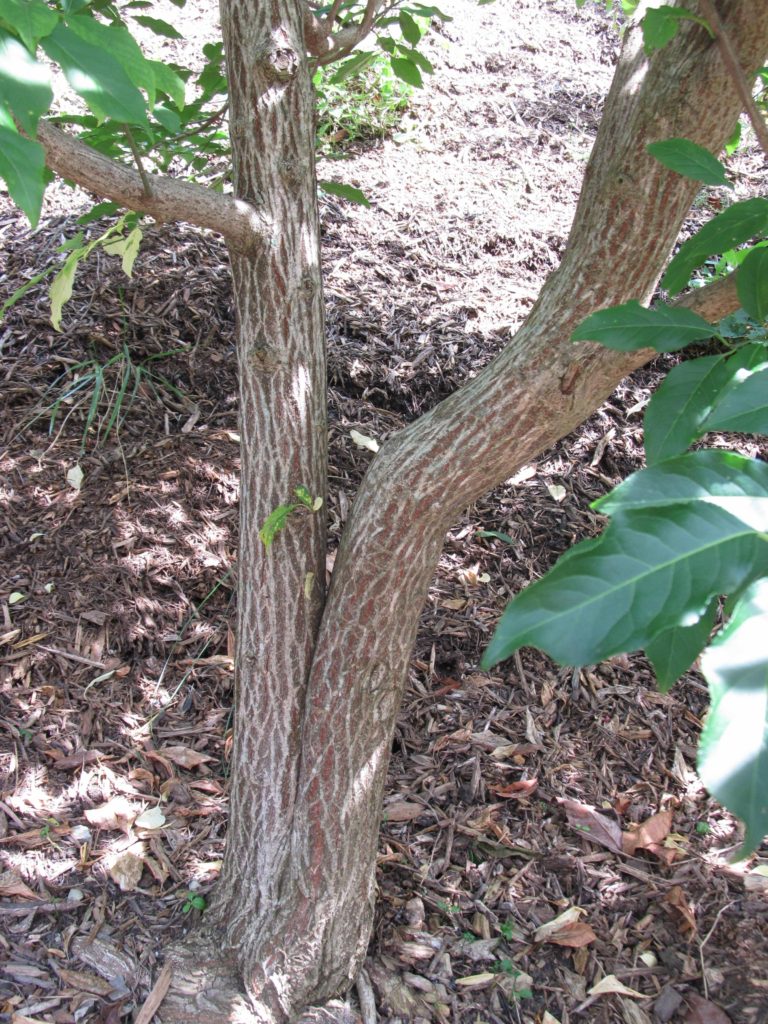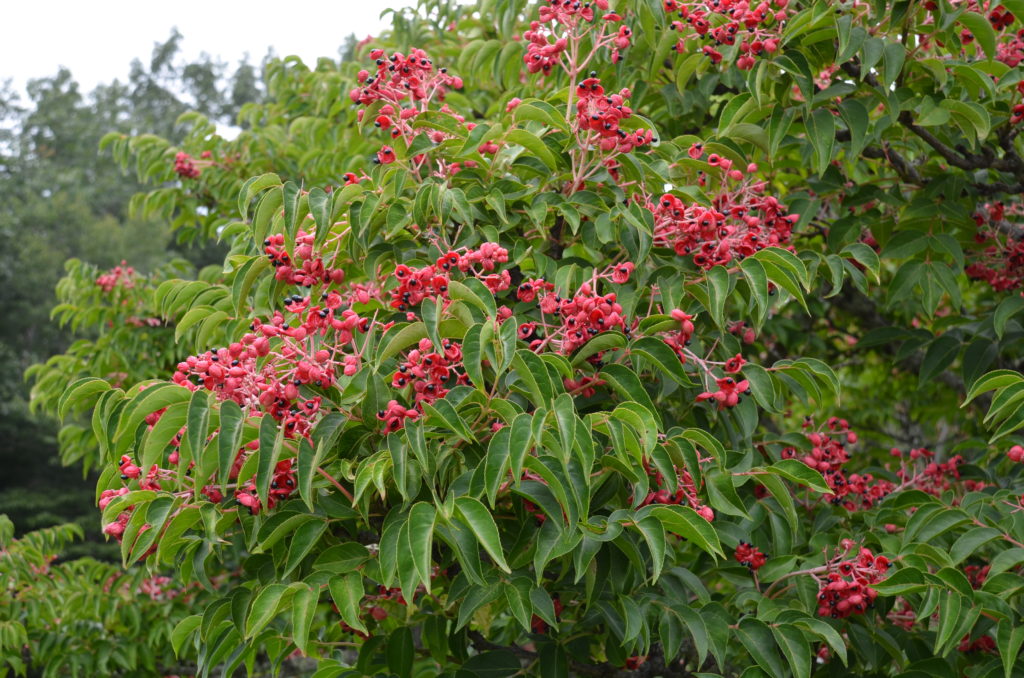Korean sweetheart tree (Euscaphis japonica) is a large flowering shrub or small deciduous tree that is native to mountain valleys, open forests and thickets in China, Korea and Japan (USDA hardiness zones 6 to 8). Dr. J. C. Raulston discovered Korean sweetheart tree in 1985 on the Korean Peninsula during a plant expedition. Yet, it is still relatively unknown in American gardens. Sweetheart tree belongs to the bladdernut (Staphyleaceae) family

It typically matures to 12 to 20 feet tall, occasionally upwards to 30 feet and a spread of 8 to10 feet wide. Leaves are opposite pinnately compound, a single leaf 6-10 inches long. Each leaf is composed of 7-11 thick, leathery, finely toothed, glossy, dark green leaflets, 2-4 inches long. The deciduous leaves turn mahogany-purple hue in the fall.
This durable tree thrives in a variety of soils, preferably moist, for sweetheart tree to bloom and bear numerous fruits. The tree should be planted in partial to full sun. The yellowish-white flowers (each to 1/4” diameter) appear in spring (May-June) in 6-9 inch long terminal panicles and go by mostly unnoticed. It tolerates brief periods of drought, and performs best in moist soils. Avoid areas of the U.S. where summers are extremely hot and droughty.
The smooth purplish-brown gray bark is lined with white striations for winter interest. Its pinnately compound foliage displays an interesting textural character. The late summer fruits shaped like tiny heart-shaped red capsules, hence the name “sweetheart tree”.
Without question, plant collectors grow sweetheart tree for its showy clusters of heart-shaped fruits. Starting in early August, ripening fruits morph from green to pink to red. In early to mid-October capsules split open revealing a tiny, shiny, black seed. The jet black seeds hang from the tree branches. Wildlife attraction to the fruits is not known.
No serious insect or disease problems trouble this highly ornamental small tree. The tree is sold by specialty nurseries found on-line.


 Posted in
Posted in 
